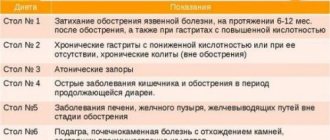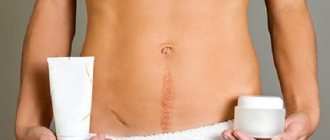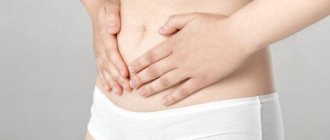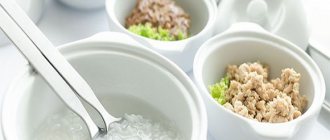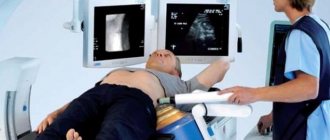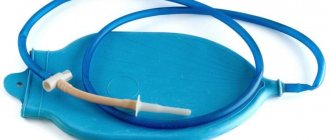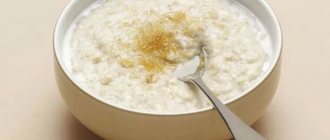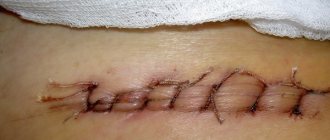Is it possible to smoke after appendectomy? When can you return to familiar things after surgery? This question often worries many who cannot imagine life without their favorite activity. Even if this activity is a bad habit, and its name is smoking, especially after removal of appendicitis
When can you smoke after appendectomy?
Smoking is an extremely bad habit, many say. It is especially harmful for those who have undergone surgery, for example, after appendicitis surgery. After all, cigarettes have a very negative effect on a person’s overall health, thinning blood vessels, disrupting metabolism, and much more.
As a result, a person’s immunity suffers and the body’s defenses are reduced. Naturally, this is unacceptable in the postoperative period. And doctors often impose a ban on smoking after appendicitis surgery.
Naturally, after an operation that takes a lot of energy and strength from the body, you should try, pull yourself together and give up the addiction, at least for a while.
Appendectomy
Laparoscopic or open method
General anesthesia
Operation time - 1 hour
Recovery in hospital - 2-5 days
Cost of the operation: from 26,000 rubles.
Surgery is performed under general anesthesia and takes from half an hour to one and a half hours, depending on the presence of complications and the technique used. There are two methods currently used to remove the appendix:
- Traditional (open) appendectomy - performed through a small incision in the lower right side of the abdomen. The surgeon separates the appendix from surrounding tissue and then removes it.
- Laparoscopic appendectomy is an endoscopic method of removing the appendix through small (1-2.5 cm) punctures in the abdominal wall.
The choice of technique is based on the position of the appendix and the presence of complications. For example, when performing planned operations and moderate inflammation, preference is given to the laparoscopic technique. In the presence of complicated appendicitis (peritonitis or abscess), preference should be given to the classical appendectomy technique.
Smoking and appendicitis - what are the rehabilitation periods?
Usually, when asked when you can smoke after surgery to remove appendicitis, doctors answer that immediately after the end of the rehabilitation period. If there is still such a need and necessity for this.
It is worth considering that rehabilitation for appendicitis takes exactly as much time as it was difficult to carry out. For example, after a regular laparoscopy, a person can recover in just a couple of days, or a week at most.
If there was a full-fledged abdominal operation, then the rehabilitation period will take many times longer - up to a month, and in some cases up to six months.
What should you exclude from your diet?
After appendix removal, alcohol is strictly prohibited.
You should follow your doctor’s nutritional recommendations not only in the early postoperative period, but also 2 weeks after discharge.
Any products that cause fermentation and irritation of the intestinal walls are strictly prohibited.
This diet is aimed at reducing the risk of rupture of internal sutures and postoperative bleeding during the rehabilitation period. The following foods and drinks are prohibited:
- alcohol in any form. The use of alcohol-containing medications should be discussed with your doctor;
- reduce the amount of salt consumed, do not use seasonings and spices;
- beans, peas, other legumes;
- exclude certain types of vegetables - tomatoes, raw green and onions, cabbage in any form, hot peppers;
- smoked meats and semi-finished products;
- conservation;
- strong coffee;
- carbonated sweet and mineral waters;
- grape juice and wine.
This video will tell you how to eat properly after appendicitis removal:
What to consider in this case
Naturally, if the doctor does not answer your question: when can you start smoking after surgery to remove the appendix, you should not immediately run and tar. It’s better to try to cope with the addiction or minimize the harm, for example, by reducing the number of cigarettes per day.
In the case when we are talking about a medical prohibition for one reason or another, for example, there are problems with vascular permeability, it is not only possible, but also necessary to listen to the recommendations of doctors. And don't break them. After all, you can only make things worse for yourself.
Nutrition during the postoperative period
Diet after appendectomy is very important.
The second most popular question for a doctor after surgery is what can you eat? The patient will have to follow a diet for 14 days.
On the first day after the intervention, only drinking regimen is indicated. No solid foods. Non-carbonated mineral water or low-fat kefir are allowed.
On the second day you should start eating. This will allow you to quickly restore intestinal motility. Meals are fractional, in small portions - from 5 to 6 times a day. What to bring to the patient for lunch:
- liquid porridge;
- vegetable purees from non-fermentable vegetables;
- fruit purees;
- broths;
- fermented milk products except sour cream;
- pureed meat;
- jelly;
- compotes.
On the fourth day, the diet expands. You can add dried bread, gradually introduce solid foods, herbs, baked apples, meat and fish. Fermented milk products in any form and quantity are indicated to normalize the microflora.
Subsequently, the patient returns to his usual diet. But any changes in diet should be agreed with your doctor.
Drinks allowed include rosehip decoction without restrictions, juices, weak tea, still mineral water and herbal infusions.
What measures should you take to bring smoking back into your life after appendectomy?
When you want to ask the question: is it possible to start smoking again after surgery to remove the appendix, you should think about the topic: what do you eat. If your food is heavy, fatty and difficult to digest, you may not need to smoke again anytime soon.
After all, after the operation, the body is already exhausted, and heavy and junk food only overloads it, forcing it to work in an accelerated mode, which in turn leads to a lengthening of the rehabilitation period.
Remember that appendicitis is a complex disease. And it needs to be diagnosed and treated in time. At the same time, it is quite difficult for the body to recover from the surgical intervention. Therefore, sometimes it is not worth overloading it additionally. And it is recommended to give up a bad habit if you want to quickly bring your body and body back to normal.
It is also recommended to add more movement and walks in the fresh air to your life. This is also necessary if you start smoking again after surgery. Because the more oxygen, the healthier the body in general. And when smoking, as you know, the body seriously lacks oxygen. And you should make sure that he has enough of everything. If you are diligently depriving him of what he needs.
Diagnostics and preparation
As a rule, an appendectomy is necessary for a patient as an emergency, but first confirmation of the diagnosis is required. To do this, the doctor will examine the patient (palpation of the abdomen, ultrasound), study the medical history, collect complaints, and take blood and urine for express analysis. In most cases, diagnosis is not difficult, but patients require additional consultation with a gynecologist, since inflammation of the female genital organs (fallopian tubes, ovaries or uterus) has similar symptoms. To confirm the diagnosis, when the clinical picture of the disease is not clearly expressed, ultrasound, CT or abdominal x-ray are prescribed. After confirmation of the diagnosis, standard preparation for the operation begins, including consultation with an anesthesiologist and the choice of appendectomy technique. Also, to remove urine, the patient will be given a catheter and the stomach will be cleaned with an enema. In general, the preparatory stage takes no more than two hours.
Basic principles of surgical treatment and types of surgical access Free or paid treatment?
How long after surgery can I go to the bathhouse?
Fresh stitches in hot, humid air can come apart, causing bleeding.
Since surgical intervention always compromises the integrity of the tissue, it invariably ends with suturing. If a bath or sauna lover, without waiting for the doctor’s “go-ahead,” hurries to return to his usual leisure time, the bandage on the wound will become wet and healing will slow down.
Fresh stitches in hot, humid air can come apart, causing bleeding. If an infection gets into the incision, it can lead to sepsis. It happens that a person’s health suddenly deteriorates: shortness of breath occurs, blood pressure rises, and he may even lose consciousness. Special force majeure events such as displacement of implants or damage to the mesh installed during hernioplasty (in case of umbilical hernia) cannot be excluded.
In addition, any surgery is a real stress for the body. Anesthesia (especially general anesthesia), then taking medications, rehabilitation - this is not in vain for anyone. In general, even if the bandage has already been removed, the stitches are healing, and the patient feels well, there is no need to rush to the steam room.
How long should you wait?
It all depends on the type of surgical intervention and its complexity, on the speed with which the patient recovers. If, for example, you have an ingrown toenail removed, then after covering your finger properly with a bandage, you can go to the bathhouse the next day. But during serious operations, rushing is unacceptable - why risk your health?
Bath after abdominal surgery
The body needs rehabilitation, so restrictions on visiting the bathhouse may persist for quite a long period.
Abdominal surgery, as a rule, involves general anesthesia, complex manipulation of internal organs, significant blood loss, and increased stress on the heart and blood vessels. Complications often occur after surgical interventions. To return to normal after such tests, the body needs time, so restrictions on visiting the bathhouse will remain in place for quite a long period.
According to statistics, almost 90% of abdominal surgery involves removing the appendix.
The wound must heal completely - with a cavity incision it is better to wait at least 3 months, after laparoscopic manipulation - 1.5-2 months. After appendicitis, complicated by peritonitis and inflammation of the peritoneum, rehabilitation will be required for up to six months.
Anyone who likes to take a steam bath will have to wait about six months after surgery on the stomach, intestines and liver.
A patient who has undergone cholecystectomy (removal of the gallbladder) in an open manner with a large incision may also require up to 6 months for complete recovery.
If you violate the deadlines, warns gastroenterologist Inna Lavrenko, then due to humidity and high temperature, the stitches may come apart right in the bathhouse, and treatment will take a long time. “You should completely avoid visiting the sauna for a while,” advises the doctor. “Dry heat is contraindicated due to its aggressive effect on the body; it is suitable only for healthy people.”
The doctor reminds: during this period, the usual active procedures are excluded, as well as the use of hard washcloths - you can only lightly massage yourself with a soft sponge. You are allowed to sit in the steam room until the first sweat.
If the operation was laparoscopic, that is, low-traumatic, then you can resume visits to the bathhouse after a couple of months.
Anyone who has undergone surgery on the heart and blood vessels will need to obtain permission from a doctor in order to go to the bathhouse. Is it possible for these patients to go to the bathhouse after surgery? Alas, those who have had coronary artery bypass surgery, have a stent placed in a vessel, or have a pacemaker installed will no longer be able to take a steam bath as before.
High temperature stimulates cardiac activity - for many people, spending 15-20 minutes in a steam room is enough for their heart rate to increase to 150 beats. In addition, the loss of fluid in the body increases the risk of thrombosis and recurrence of a heart attack. Gentle options are allowed - you can simply wash in the bathhouse, without entering the steam room and hot douches.
CARE OF SURGICAL SUTURE WHEN BATHING
In all cases, the postoperative suture area must be kept clean. To do this, you must avoid swimming in open fresh water, or use a sealed, waterproof sticker bandage. After swimming, the incision area should be washed with clean water and soap to prevent secondary infection.
Wet swimwear must be removed immediately after swimming. The seam must be thoroughly dried with a clean towel or disposable absorbent wipes.
If swimming in open water or a pool without a waterproof bandage, apply sunscreen to the seam area.
When resuming swimming lessons, overload should be avoided: training should begin gradually, giving the child time to rest.
INFORMATION ABOUT ENSURING THE SECURITY OF PERSONAL DATA
36. The operator appoints a person responsible for organizing the processing of personal data to fulfill the duties provided for by the Federal Law “On Personal Data” and the regulatory legal acts adopted in accordance with it.
37. The operator applies a set of legal, organizational and technical measures to ensure the security of personal data to ensure the confidentiality of personal data and their protection from unlawful actions:
1. provides unlimited access to the Policy, a copy of which is posted on the Operator’s website at ;
2. provides access to employees to personal data processed in the Operator’s information system, as well as to their material media only for the performance of job duties;
3. establishes rules for access to personal data processed in the Operator’s information system, and also ensures registration and accounting of all actions with it;
4. assesses the harm that may be caused to personal data subjects in the event of a violation of the Federal Law “On Personal Data”;
5. identifies threats to the security of personal data during their processing in the Operator’s information system;
6. applies organizational and technical measures and uses information security tools necessary to achieve the established level of personal data security;
7. detects facts of unauthorized access to personal data and takes response measures, including restoration of personal data modified or destroyed due to unauthorized access to it;
8. assesses the effectiveness of measures taken to ensure the security of personal data before putting the Operator’s information system into operation;
9. carries out internal control over the compliance of the processing of personal data with the Federal Law “On Personal Data”, regulatory legal acts adopted in accordance with it, requirements for the protection of personal data, Policy, Regulations and other local acts, including control over the measures taken to ensure the security of personal data and their level of security when processed in the Operator’s information system.
LEGAL BASIS FOR PROCESSING PERSONAL DATA
14. The legal basis for the processing of personal data is:
1. Legislation of the Russian Federation in the field of personal data based on the Constitution of the Russian Federation and international treaties of the Russian Federation and consisting of Federal Law of July 27, 2006 No. 152-FZ “On Personal Data” and other federal laws defining cases and features of the processing of personal data ;
2. consent to the processing of personal data, the conditions of which are confirmed by the subject of personal data when working with the feedback form on the Operator’s website;
3. civil contracts concluded by the Operator with counterparties, annexes to these contracts.
Bath after hemorrhoid surgery
Premature overheating after resection can cause bleeding and provoke an even greater inflammatory process.
Patients who have had hemorrhoids or polyps removed will need 2-2.5 months to recover. Since hemorrhoids are a disease associated with the functioning of blood vessels, a bath with its ability to accelerate blood circulation is contraindicated at this stage.
Premature overheating after resection can cause bleeding and provoke an even greater inflammatory process. And after swimming in a pool or jacuzzi, it is easy to “catch” an infection through an unhealed wound.
For avid bath attendants in the postoperative period, there are several rules.
- The first visit to the sauna after surgery should be short - get used to the steam room gradually
- Don’t worry alone, it’s better to call a reliable “assistant” with you
- Sit on the shelf not sitting, but lying down
- If you feel a deterioration in your health (shortness of breath, dizziness) - immediately leave the steam room
- Do not rub the skin around the wound with a washcloth or pour hot water on it
- To prevent thrombosis and dehydration, drink more fluids - mineral water, berry juice, warm herbal tea.
